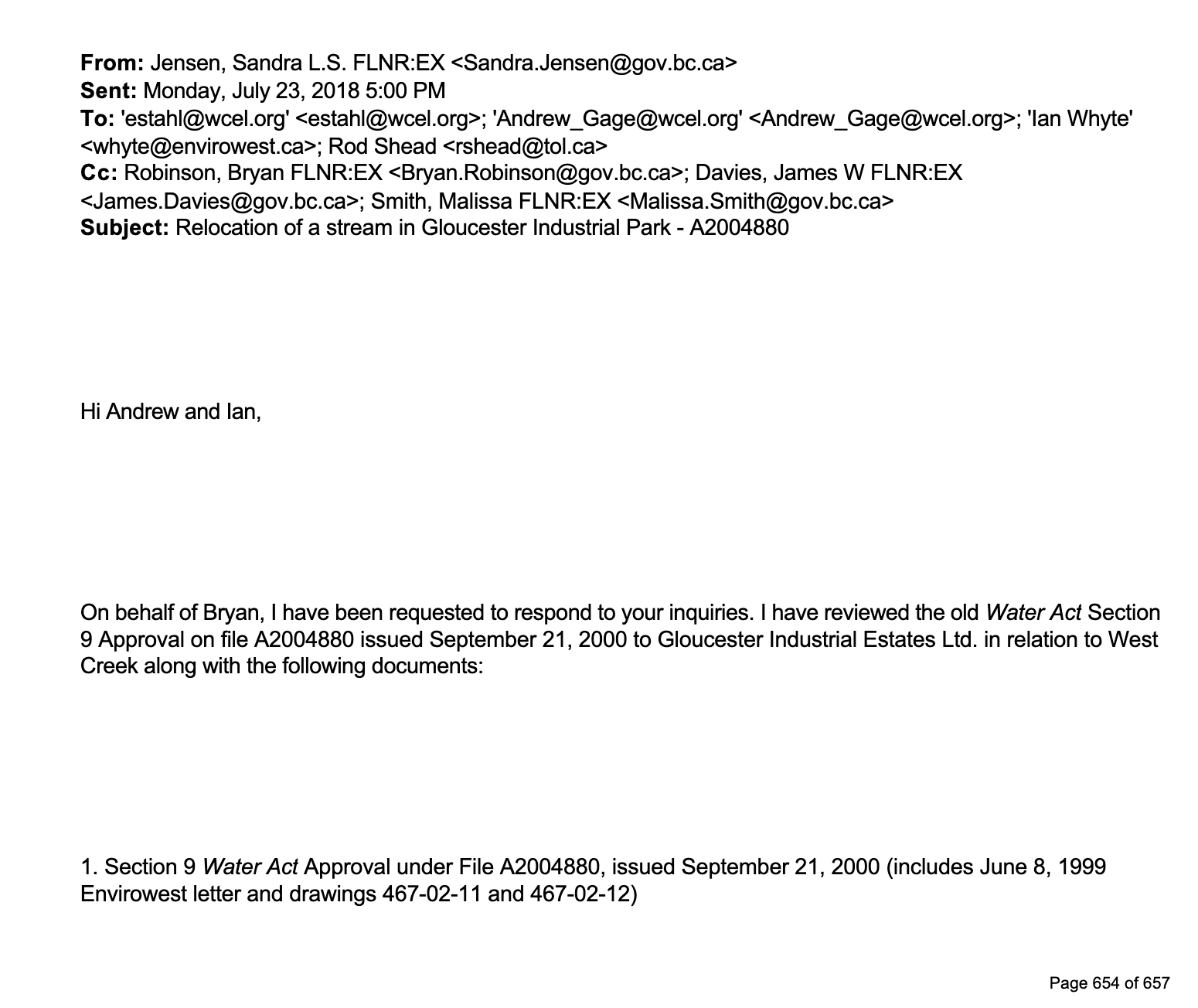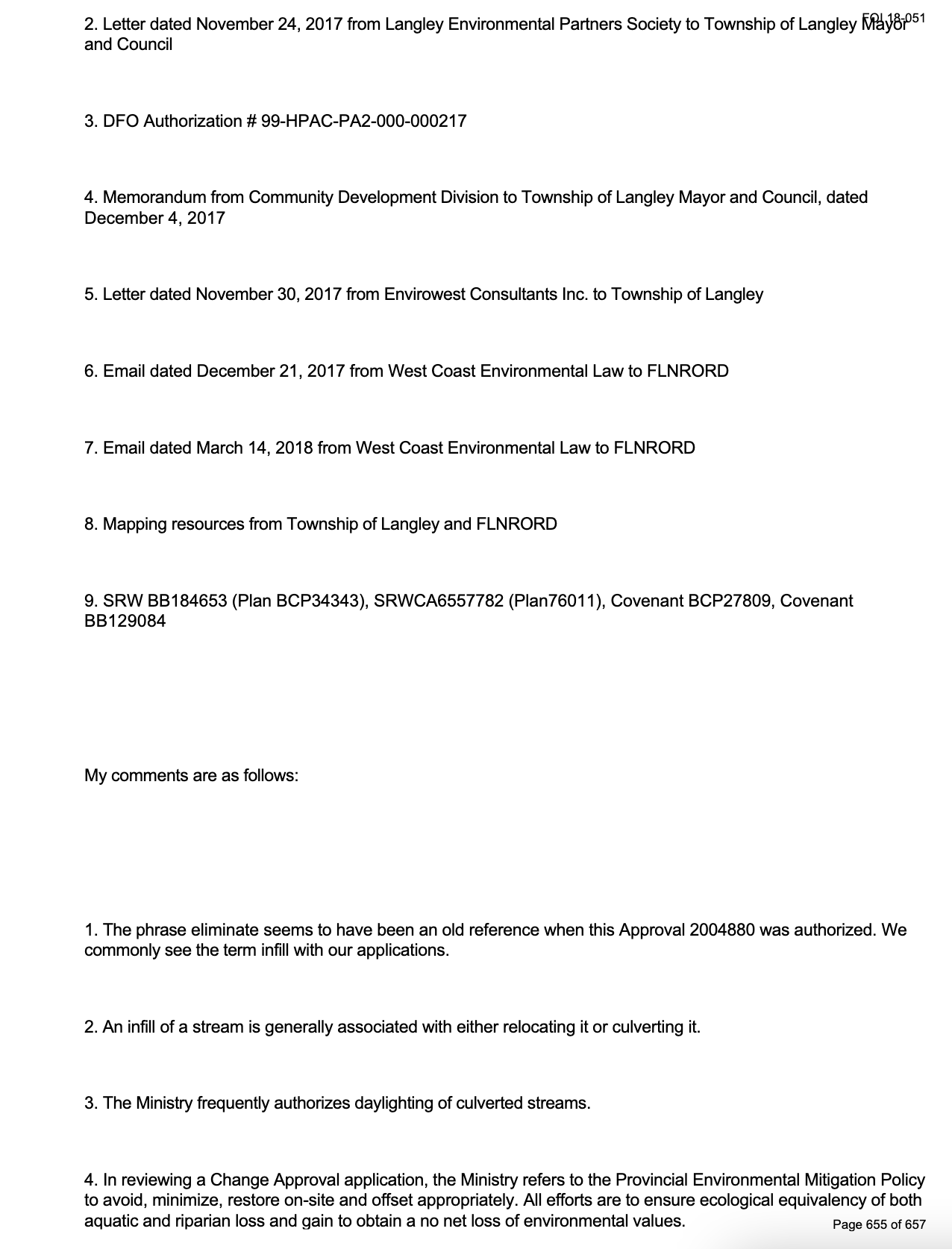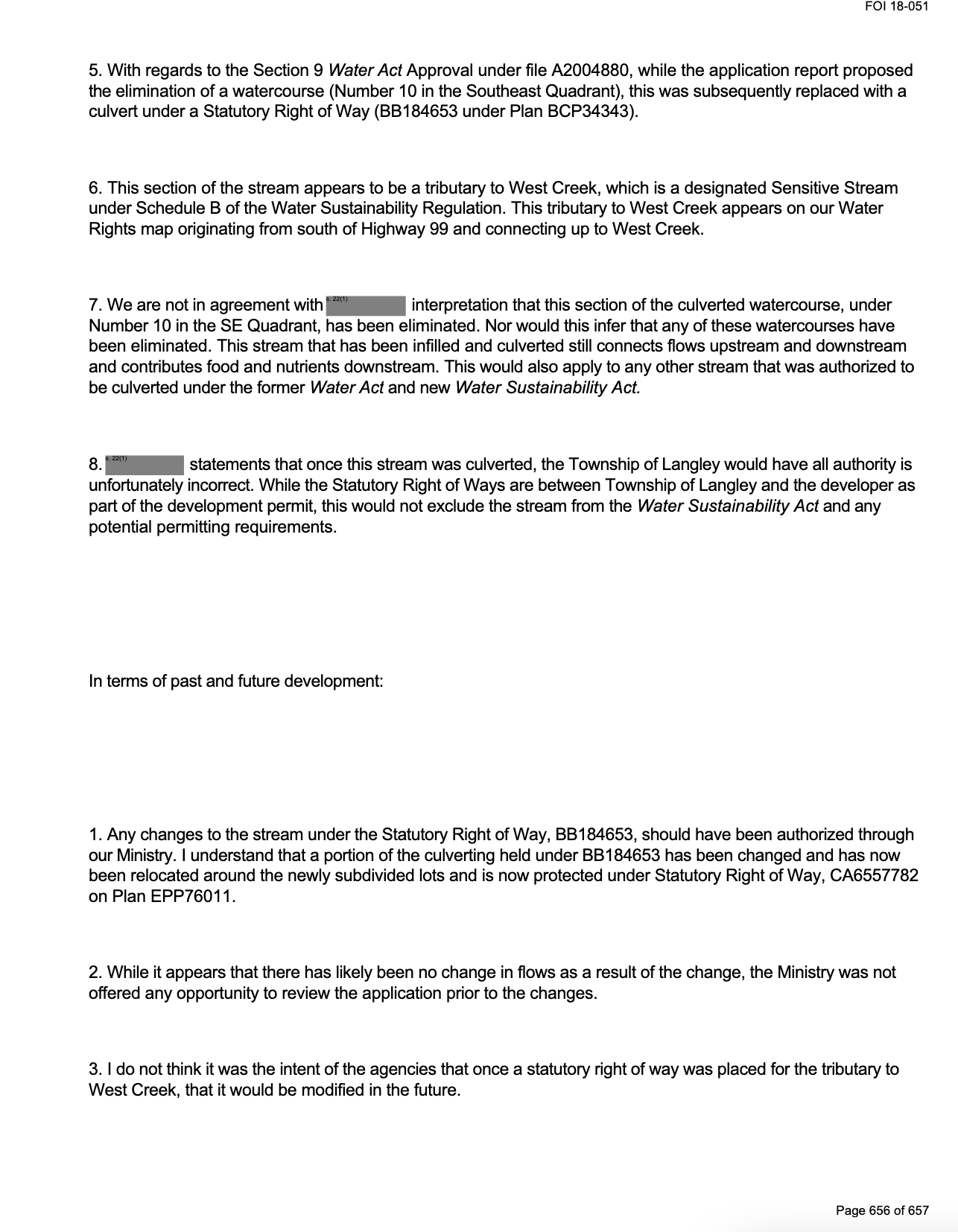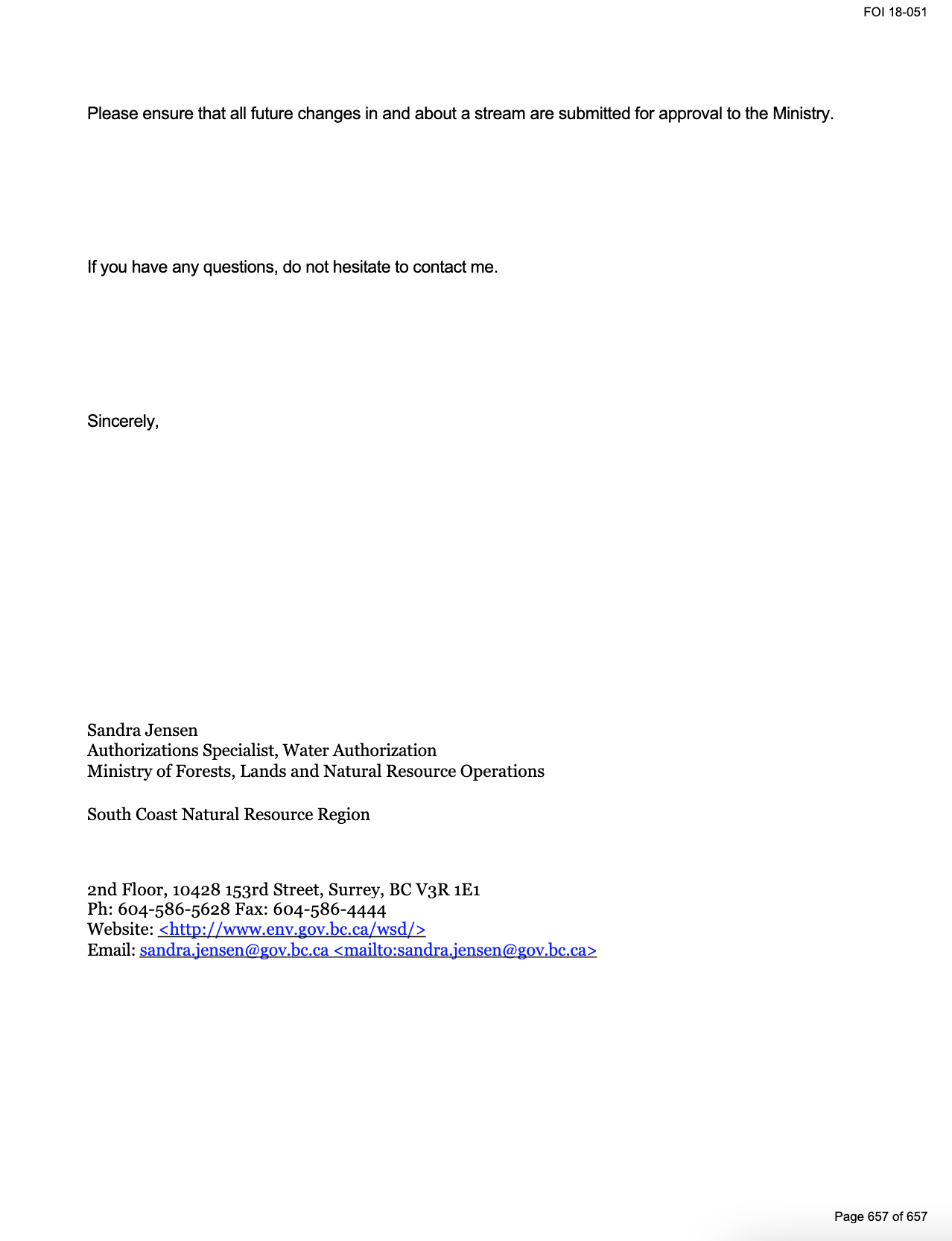Township full st(r)eam ahead on development
The Township recently adopted changes to Schedule 3 of its Official Community Plan bylaw. Schedule 3 is the section that outlines streamside protection and enhancement (SPEA) measures in development permit areas. The changes were marketed as ‘clarification amendments’ and that seems pretty accurate since the amendments made it perfectly clear that the Township does not want to listen to the public or higher levels of government when it comes to protecting our streams.
What changes were made to our streamside protections?
The most significant ‘clarification amendments’ were:
1) the removal of ditches from the definition of a stream,
2) the creation of a new class of watercourse - a non-regulated Class C watercourse which is afforded ZERO streamside protections by any level of government (municipal, provincial or federal), and
3) the ability for a developer paid consultant (i.e. Qualified Environmental Professional or QEP) to assess a watercourse on the developer’s property and have it reclassified as a non-regulated Class C watercourse.
What’s wrong with these changes?
Ditches provide storm water drainage, especially in rural areas, and, though they are constructed (not natural), they often connect up with natural watercourses or streams. Some ditches even contain fish. Given that ditches have the potential to provide water flow, nutrients and even fish habitat to connecting watercourses, it is critical that streamside protections be extended to ditches.
The Province’s Riparian Areas Protection Regulation includes ditches in the definition of a stream.
In addition to weakening the definition of a stream, these amendments create a class of watercourse that receives no streamside protections and gives proponents (i.e. developers) the ability to have watercourses on their property assessed and, potentially, placed into that new unprotected class. This reclassification would rely on the opinion of a consultant who is selected and paid for by the developer and, if successful, would save a lot of developer time and money in both the permitting and construction phases. It would also mean a larger buildable area since there are no setbacks for non-regulated Class C watercourses.
I’m going to go out on a limb here and say that these incentives are perhaps not ideal for a society in the middle of a climate emergency.
So how does the Township defend this move?
The Township would likely argue that there are strict standards in place for reclassifying a watercourse as a non-regulated Class C watercourse and that it is a Qualified Environmental Professional (QEP) who decides if and when the standards are met. Those who voted in favour of these amendments (the Contract with Langley slate along with Councillor Michael Pratt) would be quick to point out that they have already allowed the Township to move forward on completion of a badly needed field and park next to Donna Gabriel Robins Elementary School which had reportedly been held up because of a drainage ditch.
Second, the Township assumes it has the authority to make these particular changes and that they align with superseding provincial and federal legislation despite being made aware by the Province that this may not be the case (see public hearing minutes below).
A Senior Water Authorization Specialist for the Province wrote to the Township ahead of the public hearing informing them of the Province’s concerns with their proposed amendments.
Third, the Township assumes that QEPs are competent and unbiased. Did I mention they are selected and paid for by the developer?! While the Township remains unconcerned with this professional reliance model, the Province is well aware of the pitfalls inherent in relying on QEPs. A 2018 report on the Review of Professional Reliance in B.C. specifically cites a “long history of issues with poor QEP performance”. The kind of poor performance that has led to major environmental disasters like the mine tailings pond breach at Mount Polley.
Fourth, the Township assumes it knows where fish live in the Township, when higher levels of government have jurisdiction, and the difference between things like a storm sewer or drainage ditch and a channelized or culverted creek. Unfortunately, FOI documents obtained by the West Creek Awareness Group show quite the opposite to be true. Below are screenshots of the most illuminating bits which show a Township report denying the existence of a stream and subsequent need for input from higher levels of government on Beedie-owned property in Gloucester. The next four images show the response from the Province after learning that that development application went ahead without their input. The Province’s letter disputes the fact that there is no stream on the property and ends with the line “Please ensure that all future changes in and about a stream are submitted for approval to the Ministry”.





Are you concerned yet?
If so, you are not alone. I suggest giving myself and West Creek Awareness Group a follow if you haven’t already since this is something we will be keeping our eyes on as this Council term progresses.
I can guarantee you we have not seen the last of this issue.



